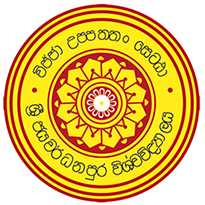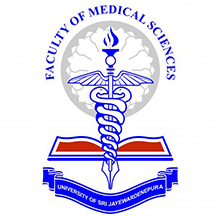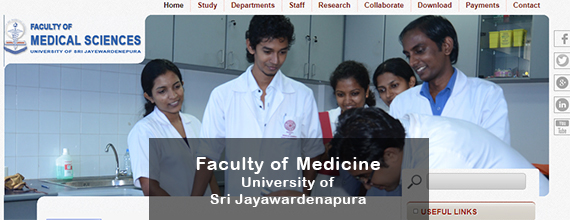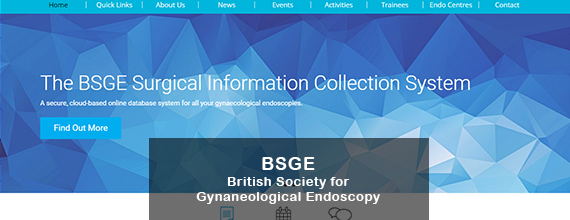Gynaecological laparoscopy takes a new turn
Three tiny, hardly visible five-mm cuts, one inside the belly-button and the other two laterally is the choice offered to patients who come in with certain women’s issues to the Colombo South Teaching Hospital at Kalubowila.
While laparoscopic or key-hole surgical procedures which are minimally invasive have been thriving at the Professorial Obstetrics and Gynaecology Unit at Kalubowila, this service was taken to a different level with this highly skilled technique being used on April 9 as an answer to cervical cancer, MediScene understands.
When asked whether it is a first for Sri Lanka, Consultant Obstetrician and Gynaecologist Dr. Dhammike Silva, who is also a Senior Lecturer at the Medical Faculty of the Sri Jayewardenepura University, says with humility that “it’s a first at Kalubowila and probably may be a first performed laparoscopically by Sri Lankan gynaecologists in the country”.
Although that Monday’s six-hour complex procedure performed without opening up the abdomen is a tongue-twister – Laparoscopic Nerve-sparing Radical Hysterectomy and Pelvic Lymphadenectomy, commonly called a Wertheim Hysterectomy – it simply means the removal of the uterus (womb), its surrounding tissues, the parametrium and a three-cm cuff of the vagina along with the pelvic lymph nodes through a laparoscopic procedure.
The 61-year-old mother of two who underwent this procedure had come with a complaint of post-menopausal bleeding and a series of investigations including a biopsy had confirmed cancer of the womb arising from the cervix. Usually the standard procedure in Sri Lanka is to open up the abdomen and perform a Wertheim Radical Hysterectomy or removal of the womb for such cervical carcinoma, MediScene understands. (Incidentally, this is named afteran Austrian gynaecologist who performed this surgery.)
However, after “clinical staging”, Dr. Silva whose “special interest” is laparoscopic surgery, along with Consultant Gynaecological Onco-Surgeon, Dr. Chinthana Hapuachchi had decided to perform this procedure.
“We have been performing laparoscopic surgery for benign problems as well as for cancer of the womb routinely but this was the first time that we ventured into the removal of a cancer involving the cervix,” said Dr. Silva, adding that the very next day after the procedure the patient was not only eating and walking but well on the road to recovery.
Some of the members who carried out the Wertheim hysterectomy (seated from left) Dr. Probhodana Ranaweera, Dr. Chinthana Hapuachchi, Dr. Dhammike Silva and Dr. C. Jayalath and (standing from left) N.S. Silva, Lakmal, Lakshitha Lambias, Dr. Gamini Wijewardane, Dr. Janaka Jayasinghe, Himali Malaviarachchi, M. Malkanthi, A. Rukshani, Dr. Rubi, Dr. Prasad Perera and Gayani
As always, the success of the procedure is due to the effort of each and every member of the team, according to Dr. Silva, who adds that there has been much encouragement from Prof. Jayantha Jayawardena who holds the Obstetrics and Gynaecology Chair at the Sri Jayewardenepura Medical Faculty.
The team included Consultant Anaesthetist Dr. Mala Nanayakkara, Senior Registrars Dr. C. Jayalath and Dr. Probhodana Ranaweera; Registrars Dr. Janaka Jayasinghe and Dr. Gamini Wijewardane; Medical Officer Dr. Prasad Perera; Medical Officers (Anaesthesia) Dr. Rubi and Dr. Sriyani; Nursing Officers Himali Malaviarachchi, M. Malkanthi, N.S. Silva, A. Rukshani and N. Agalakubura; Theatre Assistants Gayani and Lakmal and medical students Lakshitha Lambias and Laklani Jayaweera.
Although this groundbreaking procedure was carried out by this team, all the Consultant Obstetricians and Gynaecologists at Kalubowila’s Professorial Unit, Dr. Rukshan Fernandopulle, Dr. Ajith Fernando, Dr. Ramya Pathiraja and Dr. Himani Molligoda also use laparoscopic procedures, it is learnt.
Comparing and contrasting the opening up of the tummy (laparotomy) with the use of laparoscopy, Dr. Silva says in open surgery there is more tissue handling while exposure to air which causes drying may cause adhesions (pasting together).
Delving into this problem, he creates an image of the organs inside a “virgin (untouched) tummy”. Every organ has a glistening, soft and slippery surface which helps it to slide over each other without friction and without attaching to each other or the abdominal wall. When such a tummy is opened up for surgery there is a disruption of this mechanism and raw surfaces created during surgery result in the organs sticking to each other or the abdominal wall.
“The more you touch, the more prone to trauma are these delicate organs, the surfaces of which also dry up with exposure to air,” he says, pointing out, however, that a laparoscope helps overcome these issues. The gas sent into the tummy opens up all the tissue planes and we can see them magnified 10 times, which is of immense value when doing the procedure.
“This is the beauty of laparoscopy,” he smiles, with the other boons being minimal blood loss, less adhesions, quicker recovery, faster return to normalcy and a far better cosmetic result externally.
The dangers of laparoscopy include injury to blood vessels, the bladder or the bowel, the avoidance of which would be heavily attributable to the skill and experience of the Gynaecologist.The overall risk of complications in skilled hands for gynaecological laparoscopy is about 0.1% while almost all these can be managed with minimal harm with early recognition.
Cutting around ligaments
Recalling some of the other poignant procedures he has done, Dr. Silva says a woman from Galle who had already lost one fallopian tube due to an ectopic pregnancy (where the foetus begins to develop outside the womb and in the tube), had found to her dismay that the next pregnancy was going a similar way.
With one of the pair of tubes surgically removed, she had been devastated as she did not have any children. Under usual surgical procedure, an option would be to open the tummy to remove the ectopic pregnancy and repair the tube which may cause more adhesions in an already damaged tube or under even less ideal circumstances to chop off the remaining tube as well. Then the couple would have had to go in for in-vitro fertilization, commonly known as a test tube baby, MediScene learns.
But laparoscopy gave her fresh hope, for after the removal of the foetus through this procedure, tubal reconstruction followed, giving her more chances of having a baby the natural way, pointed out Dr. Silva.
Focusing on the developments in the field of gynaecology globally, he says that in the early days there were only open abdominal and vaginal gynaecological procedures. In the beginning, laparoscopy was used only to look inside the tummy to diagnose disease. Later, with the development of the procedure, almost all gynaecological surgeries can now be done totally with laparoscopy.
The future, however, lies in robotic laparoscopic surgery, routinely done in some western countries, while neighbouring India has already got into this field as well. “This is the future," says Dr. Silva, ruefully conceding that it is very expensive and may not be an urgent need in Sri Lanka due to the small number of patients who would seek such treatment.
What is gynaecological laparoscopy?
This is a procedure which helps Gynaecologists to look inside a woman’s tummy and examine her fallopian tubes, ovaries and womb, explains Dr. Dhammike Silva, using a plastic model which helps him to teach medical students and trainees.
Dr. Silva explains the procedure using a plastic model. Pic by M.D. Nissanka
The patient is put to sleep (given general anaesthesia) and a laparoscope – a medical telescope with a camera attached – inserted into the tummy through a five or 10 mm cut in the belly button.
Some gas is pumped into the stomach to expand it and also separate the organs and allow them to be seen clearly by the Gynaecologist.
The camera sends pictures to a television screen and these pictures are magnified so that the organs are well visible, he says, explaining that gynaecological laparoscopy is used for both diagnosis such as taking tissue samples for biopsy and for treatment.
When using laparoscopy for treatment, MediScene learns, two or three more small five- mm cuts are made in the abdomen for the insertion of surgical instruments.
The range of laparoscopic procedures offered to patients at Kalubowila, according to
Dr. Silva, includes:
Removal of womb, ovaries and fallopian tubes for benign diseases.
Myomectomy or removal of fibroids which are benign tumours which grow from the womb wall and cause painful or heavier periods or both and could also lead to complications in pregnancy.
Treating endometriosis which is caused by the lining (endometrium) of the womb getting implanted outside the womb in the pelvis, abdomen, on the ovaries or the intestine. In the wake of endometriosis may come adhesions, pain before and during periods or painful intercourse, as well as infertility.
Reconstruction and reversal of ligation and re-section of tubes, “undoing” permanent sterilization which many had sought especially after the tsunami when they lost their children.
Treating pelvic pain and infertility.
Cystectomy involving the removal of ovarian cysts which occur in the ovaries. These cysts are fluid-filled sacs. Usually, only large cysts warrant removal. The ovary has naturally occurring cysts which are about 2 to 2.5 cm and they contain a maturing egg or ovum and form on the ovary’s surface. Although they are supposed to disappear after releasing the eggs, sometimes they do not release the egg or fill up with fluid and remain. Some cysts filled with blood or altered blood are commonly called chocolate cysts as the altered blood looks like brown chocolate. This happens in severe forms of endometriosis. Different cysts may contain different kinds of fluid or solid structures and the approach may differ according to the type of cyst. However, most cysts can be removed by laparoscopy.
Adhesiolysis is surgically freeing organs which have adhered together. Adhesions may cause infertility, pelvic pain or painful intercourse. Scar tissue could occur after surgery or a pelvic infection.
Laparoscopic hysterectomy, Bilateral Salphingo-oophorectomy, Pelvic lymphadenectomy (removal of pelvic lymph nodes) and omentectomy (a fatty apron that provides protection in the tummy) is done for cancer of the womb. This complex laparoscopic procedure normally done by opening the tummy is carried out laparoscopically at Kalubowila.
Sacrocolpopexy deals with vaginal vault prolapse (when the top part of the vagina comes down and sometimes out), may be after an open-tummy hysterectomy, causing discomfort. Here the prolapsed section is taken and attached to the sacrum (the triangular bone close to the bottom of the spine) with a prolene mesh.
► Read the News Article Here (Published)







